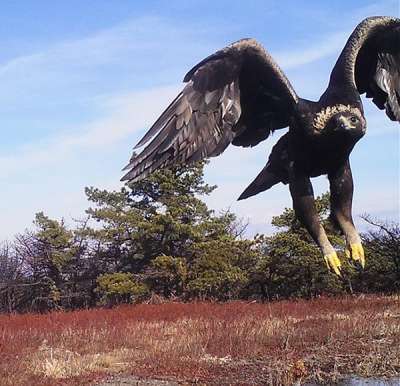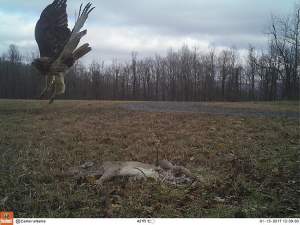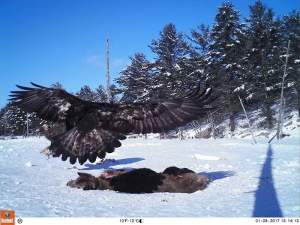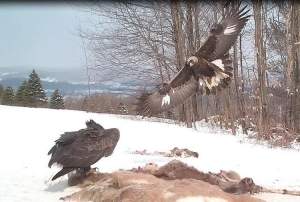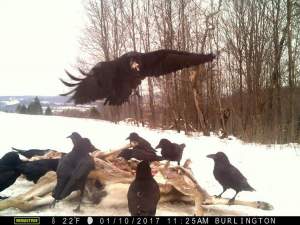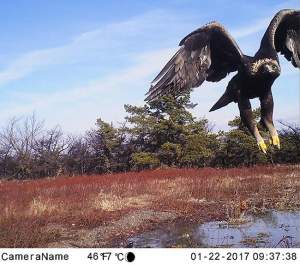In their early days, game cameras were marketed mostly to hunters looking to get a leg up in understanding the population of specific game species in their favorite (or secret) hunting areas. Landowners quickly took to the technology as a way to get a sneak peek on what’s really living out in or trespassing on their own woods. And it didn’t take long for scientists to catch on to the power of game cameras in conducting all sorts of wildlife-related research, not just on particular parcels but sometimes on a much larger landscape level. One example of the latter is the scavenger-related research being done by Todd Katzner of the U.S. Geological Survey’s Forest and Rangeland Ecosystem Science Center.
With the help of an organized network of citizen scientists who submit images from baited “camera-trapping” sites in their local areas, Katzner and fellow researchers have managed to collect data – and more than 3.2 million photographs – relating to eagles and other raptors and birds, not to mention a number of other animals including mammals such as grey foxes, coyotes, and even spotted skunk and bobcat attracted by the bait. This is a huge project, with cameras deployed from New England all the way south to Florida and from the mid-Atlantic states to the Midwest and beyond. With this massive amount of information, it has been possible to better understand big-picture issues, such as trends in the population and migration patterns of raptors. The game camera network has also provided visual evidence shedding light on specific research topics, like injuries and death to birds caused by porcupine quills.
From a scientific perspective, all of this game camera footage represents a research bonanza. For those who are just interested in seeing a wide swath of wildlife in ways that are rarely possible up-close and in-person, the collection of photos is just plain fascinating. Here is just a small sampling of images from Katzner’s camera-trapping network, these featuring birds in flight – something that’s often missed with ground-focused game cameras. (Thanks to Todd Katzner for sharing some background on each of these shots.)


